So I’m this kid growing up in the 1970s, and I’m really into old cars, particularly from the 1950s to early 60s. I’ve seen Fords, Chevys, the ’59 Pontiac (a neighbor had one) and a few others, but I never really knew what they were. Then on Christmas Day 1977, I got a copy of Tad Burness’ American Car Spotter’s Guide. Now everything made sense. I now knew the year and make of every old car I would see. I could see the logical design progression from 1940-65. And I made some fascinating discoveries: Corvettes started in 1953 and looked so cute in the beginning. There were cars called the Henry J and Willys Aero. And there were some cars I had never seen before that were startling and shocking in their appearance: The “bullet-nosed” Studebaker; the “monster-face” ’59 Dodge; the ’59 Cadillac with huge tailfins almost as high as the car’s roof! Are these cars real? Did they really make these? Apparently so. And then there were the out-of-this-world late ’50s Mercurys . . .

I actually liked the 1957-58 Mercurys. To me they looked long and sleek and clean–with straight body lines that evoked level, rapid motion. I was intrigued by the use of “grooves” that suggested fins. The front was a little odd, with its dual bumper “rams” that looked like big lips. But these things gave the car character–“Whaddaya want, just headlights with a plain grille in between?” Oh, yeah–that’s what we would get later in the 60s.
One limitation of the Spotter’s Guide was it didn’t show all models, and sometimes the back of a car was not shown. And some of the images weren’t so clear. So I didn’t realize just how extreme the Park Lane model was in terms of looks.

But to fully understand the Park Lane story, we have to go back one model year to look at 1957’s top-of-the-line car, the Turnpike Cruiser.
Mercury was trying really hard in 1957 to establish its own identity. The cars were entirely new and distinctive, not just “fancy Fords”. And it was decided that they needed a “halo car” to really *wow* the public and establish Mercury as a style and technology leader. Hence the Turnpike Cruiser, with its power operated rear window, tachometer, Seat-O-Matic, and air intakes in the upper corners of the radically wrapped windshield which sprouted (fake) radio antennae.
Despite its advanced styling and novel features, the Turnpike Cruiser didn’t sell very well, possibly because of its high price. In 1956, the Mercury price range was about $2450 to $2900. But the ’57 Turnpike Cruiser started at a lofty $3849 for a 4-door hardtop. That’s a pretty big leap for Mercury’s established clientele to make. Still, 16,861 Turnpike Cruisers were sold.
1958 is a whole new model year, and in a move that seems to defy all logic, the “ultimate dream car” Turnpike Cruiser is now demoted to being a subset of the Montclair series, and the NEW top-of-the-line dreamboat is…the Park Lane!
This meant that 1958 Turnpike Cruiser buyers got something of a break, since the base price had now been lowered to about $3500. That didn’t stop Turnpike Cruiser sales from dropping by more than half!
Okay, so now Park Lane is top dog. What do we get for our extra money? Park Lane is bigger: 3″ more wheelbase and 7″ inches more length (220″ overall). The rear fender “grooves” are wider and finished off with elongated “ray gun” taillights that Flash Gordon and Buck Rogers moviegoers would instantly recognize. The interior is extremely lush. Power steering and power brakes (along with a few other goodies) are standard, but the unique features of the Turnpike Cruiser are absent on this car.
But if that wasn’t enough, you could get this optional Super Marauder engine with 400 horsepower! Is this the highest horsepower stock engine of the ’50s? Where are the muscle car freaks? We’re talking about the basic 1958 Lincoln engine with three 2-barrel carbs, installed in a car weighing about 500 lbs. less than the Lincoln! The effortless waves of torque must have been quite extraordinary, yet so little has been written about it.
Here is the end result: A tour-de-force of space-age styling, elongated and lavishly trimmed, propelled by a super-powerful engine, and offering levels of luxury and performance meeting or exceeding anything produced by Cadillac or Lincoln. Behold!



Only advanced and prosperous societies can create such magnificence (or decadence!) Park Lane was even more expensive than last year’s Turnpike Cruiser, with starting prices close to $4000. Nevertheless, 9,252 people ponied up for one–more than the 6,407 Turnpike Cruisers that were sold in ’58. So Mercury was selling a fair amount of cars priced significantly higher that the recent 1956 models, and presumably earning a greater profit on each one. But this was little consolation when total Mercury sales were down from 286,000 in ’57 to 133,000 in ’58 (Ugh!) A recent recession was hitting medium-priced makes hard. Also, Mercury was now competing with Edsel, and I think Edsel stole a lot of sales from Mercury.

So now it’s 1959, and what’s Mercury’s strategy? Double down hard–make the cars even longer and wider, exaggerate the existing styling even further with deeper “grooves”. Make the rear even more terrifying with bigger taillights and oblong reflectors that scowl at those traveling behind. Add the biggest, most extreme bubble windshield in existence, and create a dashboard that rivals all others in terms of fantasy and complexity.
Drop the once ballyhooed Turnpike Cruiser, but keep the Park Lane which may be showing some promise.
How did it all work out? Stay tuned for the next installment which will continue the Park Lane story from 1959 and beyond . . .
Further CC reading:
Car Show Classic: 1958 Mercury Park Lane Convertible by Tom Klockau












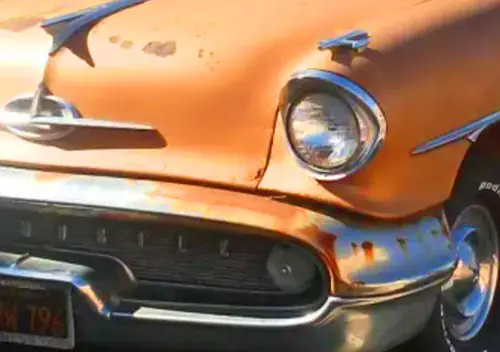
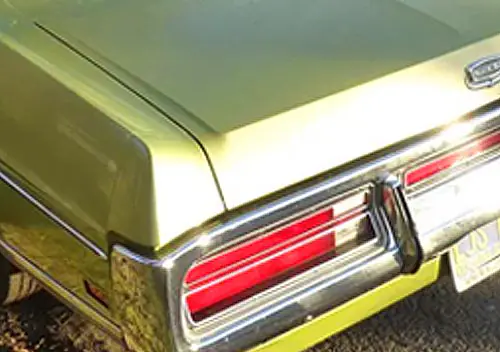
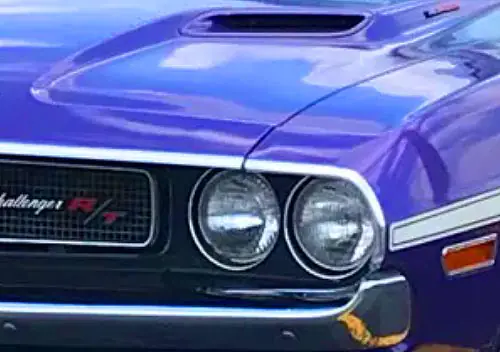


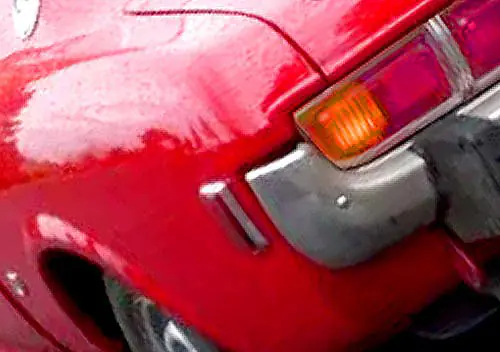

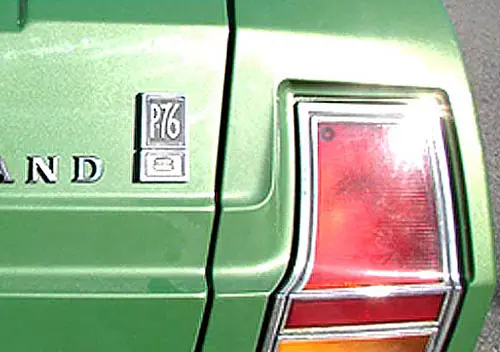
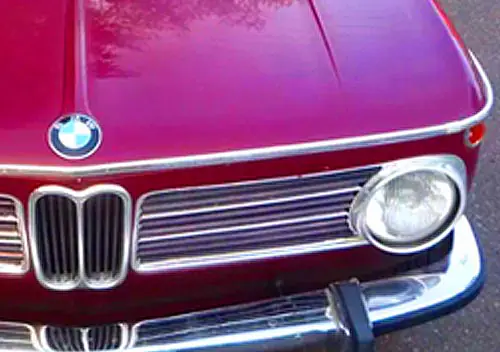


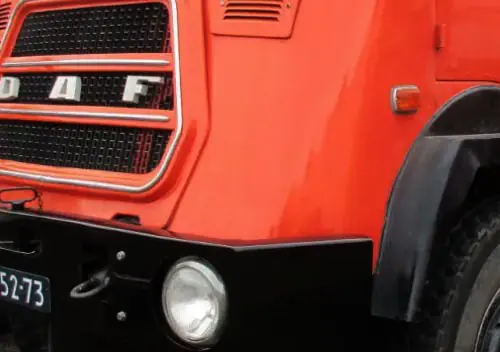
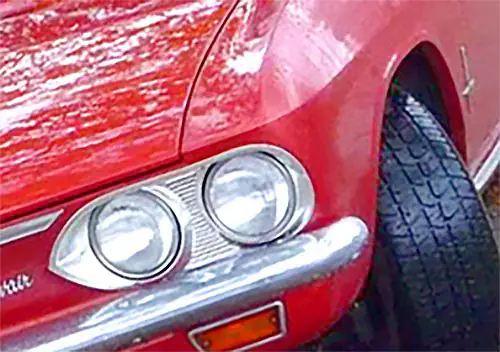
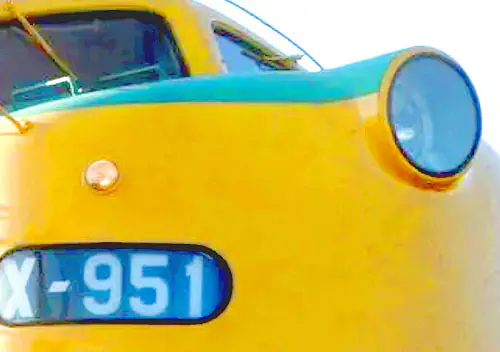
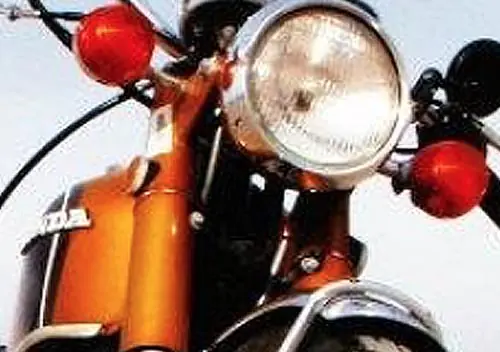
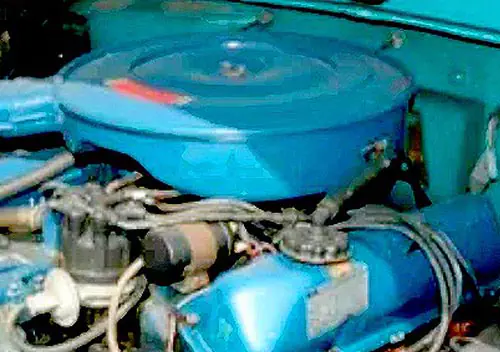



I knew Mercury had different sizes but didn’t know the Park Lane had different styling! The taillights are almost ’59.
Must have been Mercury’s answer to the Star Chief.
Stephen,
Simply fantastic article and what an outstanding Mercury 4 door hardtop. And best of all, it lives in Victoria, Australia!
Really enjoyed the read, and hope I see the car one day in ‘real life’.
Carl
Wow. Amazing writing and presentation Stephen. As always. I applaud and compliment, your passion for design of this era.
One can only consider autos like this, as moving modern sculpture. A moment in time. Over-the-top flamboyance. And perhaps a less realized tool, during the Cold War. Countering the grim auto design of the Soviets.
I remember being fascinated by these Mercuries from the time I got my Tad Burness book too! Even though I am a bit older than you, I don’t recall seeing these when they were out as common transportation, and even in the mid 70s when you would occasionally see an old 50’s boat still chugging along, I never saw one. I still remember one day in the late 70s when I first came across a rusty, yellow and white 59 Mercury 2 door hardtop, and all I could think was “Wowwwww, I can’t believe they actually built something like this”. The one I do remember catching fleeting glimpses of from childhood was the 60, with those big ovoid taillights.
Mercury styling always faltered in the roof lines, IMHO. The odd C pillar on the 4 door hardtop (with the big Park Lane badging) always looked off to me.
As I recall from researching it years ago, Mercury was forced far up the price ladder in 1957 and especially 1958 once the Edsel hit, and they didn’t sell all that well. I am sure Edsel stole a lot of those sales. Ford must have lost their corporate shirt on these stand-alone Mercuries of 1957-60.
I as well, though I was into cars a bit before I got mine (probably about 1967) through Scholastic Book Services, I was greatly influenced by it…especially the pre-war cars, which were pretty much gone (or very rarely seen) even when I was a kid.
Unfortunately I gave my only copy to my Nephew, who promptly tore it apart…he’s not a car person but I thought he might enjoy it anyhow.
Tad made a great spotters guide, even pointing out cars which were already rare in his time, which pretty much would mean I’d never see one. I can’t recall seeing one of these Mercuries, they were way different than Ford or Lincoln back then, which is sad now because you could tell they became way more conservative in Mercury’s later years pretty much becoming a Ford with a luxury version, with few unique models (the Mercury Capri post Fox body being one of them) though the Cougar had different back end than the Thunderbird in the mid 80’s eventually they went away.
My Dad had a Mercury phase, before his last 2 cars (both Impalas) he had 3 Mercury Sables in a row (before that he had 2 full sized Ford Wagons in the late 60’s/early 70’s. They were nice cars…but both he and Mercury are gone now.
love me some late ’50 s mercs. those crazy space age tail lights and the best, the backwards roll down rear windows. I could go all old guy on you right now.
ps I also enjoy your literate literary writing.. reminds me of that guy who used to write those beautiful essays on the back page of some motorcycle magazine, can’t remember his name, peter something?, the one titled “garage ichi bana” went far beyond nuts and bolts to the transcendent experience of being alone at night in a scruffy garage in the presence of a triumph tt-120 scrambler with it’s gorgeous upswept pipes and a xke jag with a rear end and pipes that should have been illegal.
beautiful piece.
Fantastic article Stephen, and I for one sincerely appreciate your attention to this particular year of the forgotten Park Lane Mercurys! I also was surprised to read your reference to Tad Burness’ Car-Spotter Guide, 1940-65! Tad was a personal friend of mine, as I started a pen-pal writing blitz with him when I was 11 yrs old. We wrote back/forth for quite a few years and traded old car ads through the mail. I have everything he ever wrote, and collected his “Auto Albums” from the newspapers over the years and made scrap books. I miss him dearly.
I’m especially fond of the Mercury cars that were most unlike the same-year Fords, like these. Somewhere around 1963-64 we had lower-line Mercury (’57 or ’58), and I guess I’m just a bit young to remember dashboard details (plus, I more often rode in the family wagon).
Once in a while I see one of these on Facebook Marketplace–long barn-stored, but running and driving and not mouse-ruined—and think “nobody else at the Cars & Coffee is gonna have one of those!”
I look forward to your next installment!
I was but an impressionable child in the 1950s but distinctly remember the new 1957-58 Mercury’s and the Turnpike Cruiser’s are still a favorite. Space age styling with the glam factor. A wonderful era of glam mixed with then space age thinking, metallic threads in upholstery and even carpets, so much sparkle and chrome.
I now realize how much I was influenced by the sparkle of the 1950s. Autos with all the chrome, mid-century furniture with new textiles adding some lux threads. In the 1950s Mom even bought a modern sectional sofa with some metallic in the fabric. Not surprised I became an Interior Designer and had so much fun with sparkle and glamour in the late 70s and then the 1980s when glam was so much fun. During my career I designed casino hotels when too much was never enough. All started with my attraction at a very young age to some 1950s autos like the 1957-58 Mercury’s.
I’ll never forget discovering a ’59 2-door hardtop hiding in a garage on one of my “urban hikes” to school in Iowa City in about 1961 or so. Wow! I had never seen anything like this since arriving in the US in 1960. And the rear alone was utterly mind-blowing. And of course, given that it was Iowa City of the times and I was PN, I walked right into that open garage to check out the interior and front end.
Not sure when I first saw a ’57 or ’58, but that first ’59 left a very lasting impression.
Thanks for this terrific write-up. I’m loving your takes in these mid-century cars.
Great looking car. Thx for good article. Can’t wait for next!
I feel like this car was the direct inspiration for Bruce McCall’s 1958 Bulgemobile parody.
The artwork in the upper left corner, looks very McCall-like, except the people in the front seat are too large.
Stephen – I too liked the ’57 through ’59 Mercury and I had several up close and personal experiences with a ’59. A neighbor mom, with a son my age and in my class at school, had a ’59 four door sedan (don’t remember the model but not a Park Lane). It was black with a white roof. What I remember most was the huge distance from the passenger seating position to the dash and windshield – unbelievable compared to my mom’s car. So I rode in that car several times to/from elementary school.
Several years later during high school years she still had the Mercury. Then I remember helping, with her son, pushing the Mercury out of a snowbank at the end of their driveway after she got it stuck backing down the slight incline. We were big enough then to get the job done – with her “rocking” the car back and forth. Soon after she traded the ’59 Mercury for a ’66 Comet two door hardtop – a much more appropriate car for her.
It is nice to see an example of a period Mercury without the dreadful “Continental” spare tire kit. There is a 1958 Mercury around here that regularly shows up at car shows and the Continental spare is hideous. The rear of the car is already too long and the fake spare kit must lead to serious butt dragging on steep driveways.
Younger people must think most all 1957-58 Mercury’s came with those large skirts and continental kits. I grew up in this era and only remember one neighbor that had a 1957 Ford Skyliner hardtop / convertible with a tail dragging continental kit. Didn’t like those then, don’t like them now.
I’ll let younger readers imagine what these cars looked like to kids in the 1950’s, when those taillights & associated jewellery were much closer to eye level. 🙂
The tagline on the ad for the 1957 Mercury, ‘Straight Out Of Tomorrow’, is an interesting alternate to Chrysler’s ‘Suddenly It’s 1960!’ campaign for the same year. Was the Mercury actually the better overall predictor for 1960 than ‘The Forward Look’? It certainly was for 1959.
Non existant brand in NZ by then, the last new Mercurys sold in 48, one mid 50s car was imported new privately, converted with chain drive steering and lived in my home burg, it was a Canadian car to get around higher tariffs on built up cars, it was different to anything else I ever saw and only found out why fairly recently, I liked it.
I got my copy of Tad Burness’ American Car Spotter’s Guide in 1979 at age 16. Found the book in a local speed shop in Norway. Opened up a new world for me. My favorite book of all times, still got it.
Wonderful article, Stephen! I’m old enough to remember these 1957-59 Mercurys when they were new or nearly so. Certainly they weren’t as common as the Chevys, Fords and Plymouths of the day.
I’ve been thinking about the Big Three and what brand has had the most star-crossed existence in the Post-WW II period? I wouldn’t include Edsel, since it failed so quickly. Mercury has to be near the top, along with DeSoto and possibly Plymouth, the last because it was a “companion” brand until 1960 and then got cannibalized by Dodge afterward. GM was dominant and very lucky — Pontiac and Oldsmobile had great runs until the nearly the end of the 20th century and then had to be euthanized in the first decade of the 21st.
As elaborate as these were, Consumer Reports didn’t find them particularly reliable (the black dots are bad), with 1958 being the worst. Pity, since these are a sort of high water mark for 50s baroque, which always fascinated me.
Dad , a buick man bought a 59 colony park because the 3rd seat faced forward. learned to drive on this black woody on red beauty. waxed it often. tranny shift was now on the colum. amazing dash and big all over on 126in wheelbase. bought at D&E motors in williamsville ny.
I want the *pink* 1959 Mercury Park Lane (photo shown from Hemmings Motor News). Does anyone know Mercury’s name for this shade of pink? …then I’ll just need a winning lotto ticket…
One of my fantasy cars, exposed as an unrealiable lemon?
How did these cars stack up against Chrysler offerings?